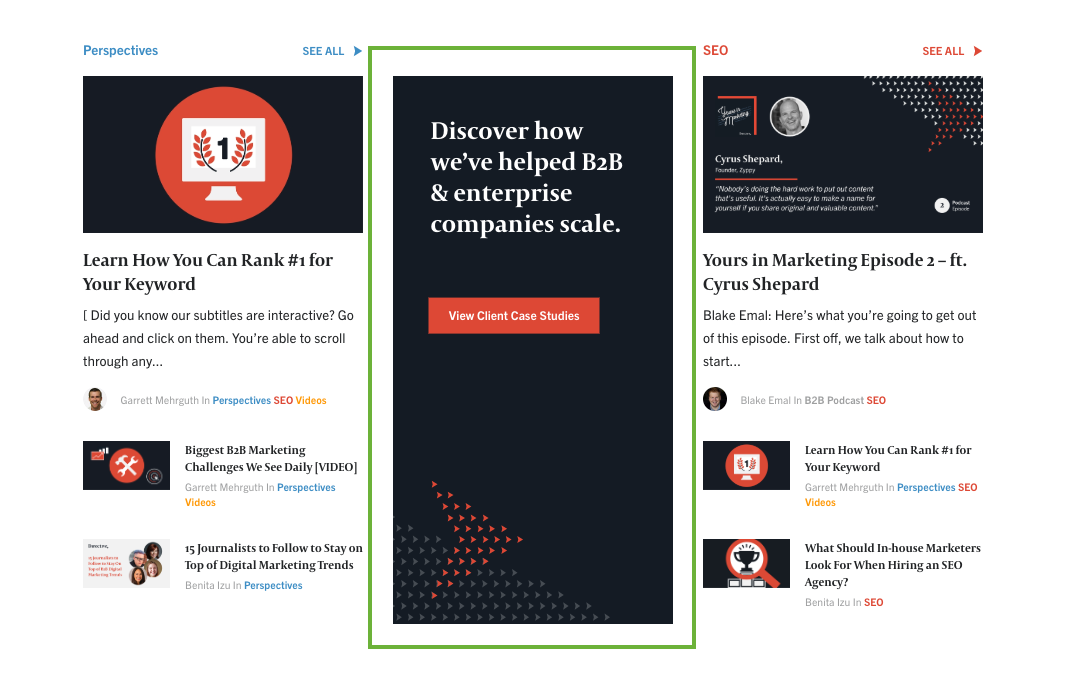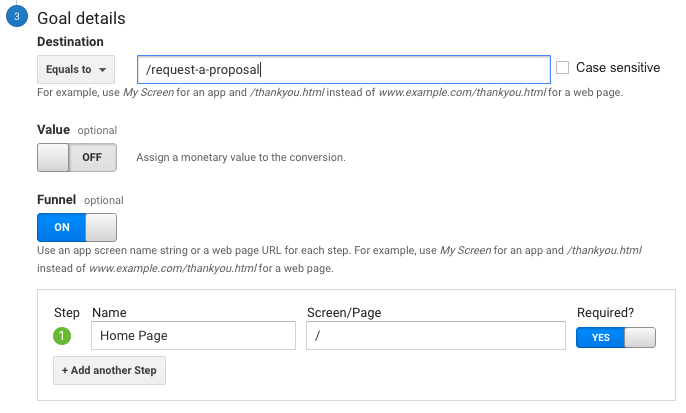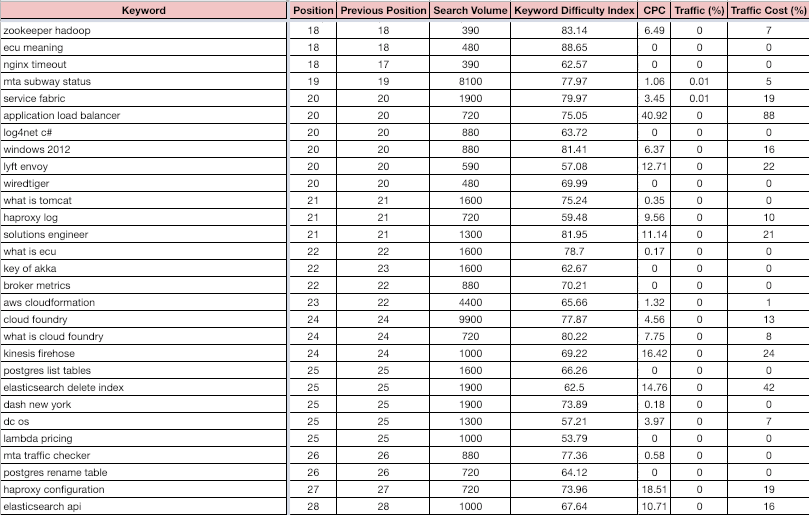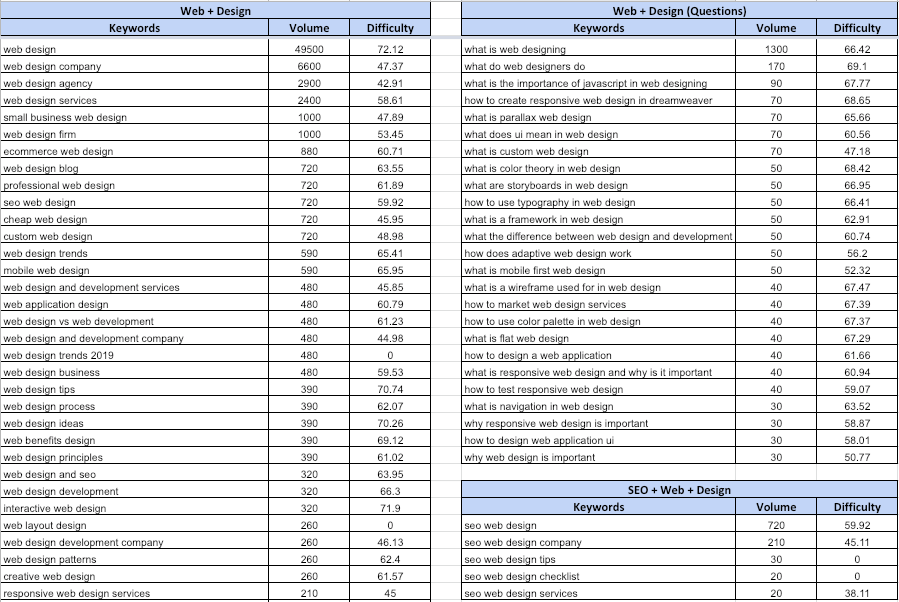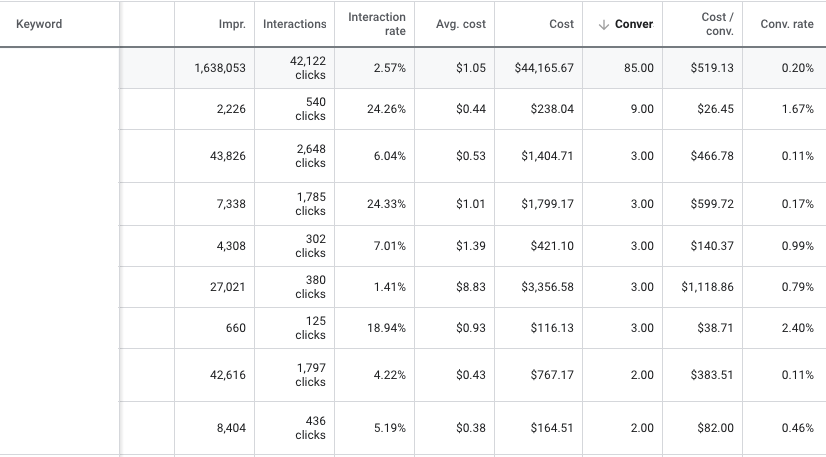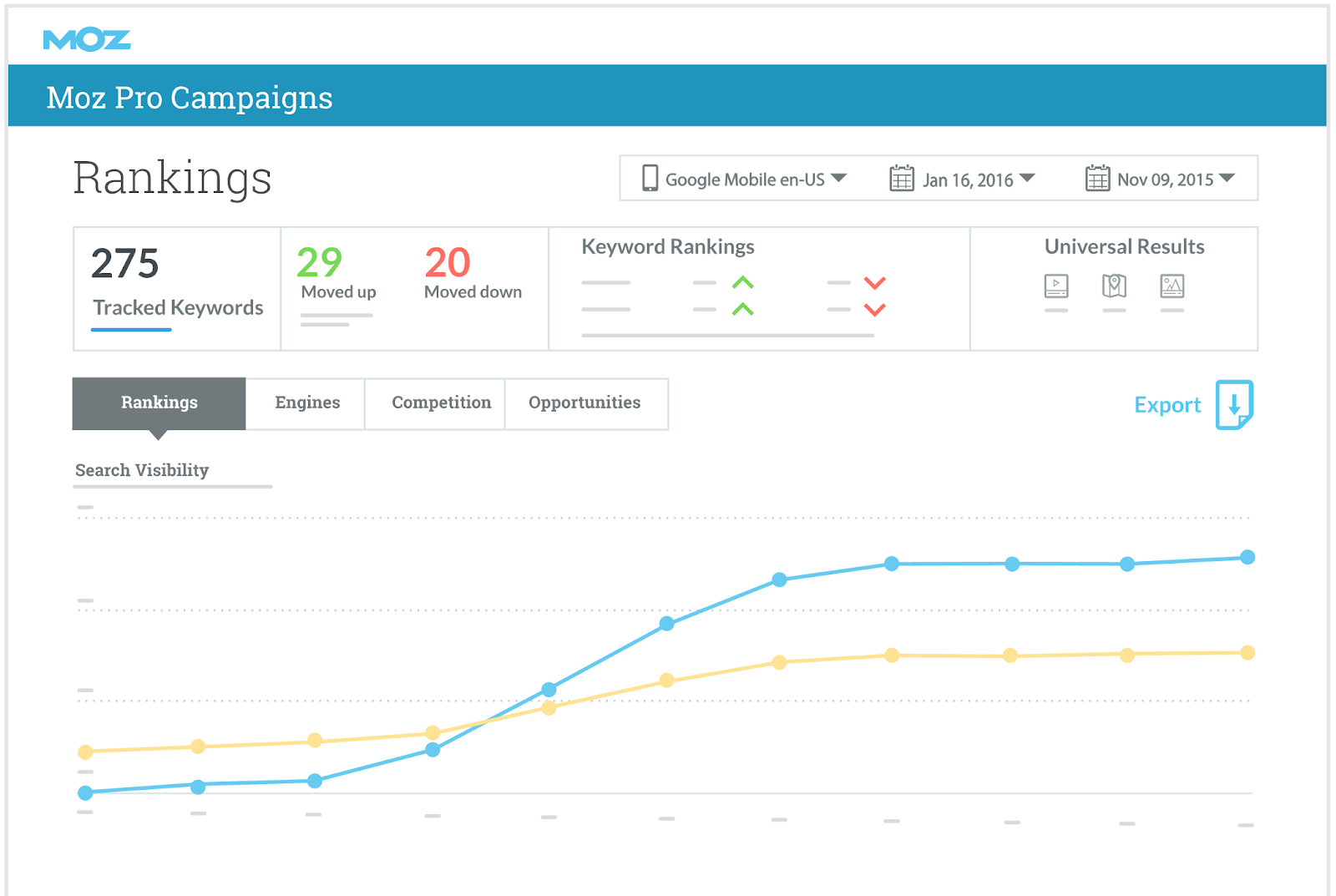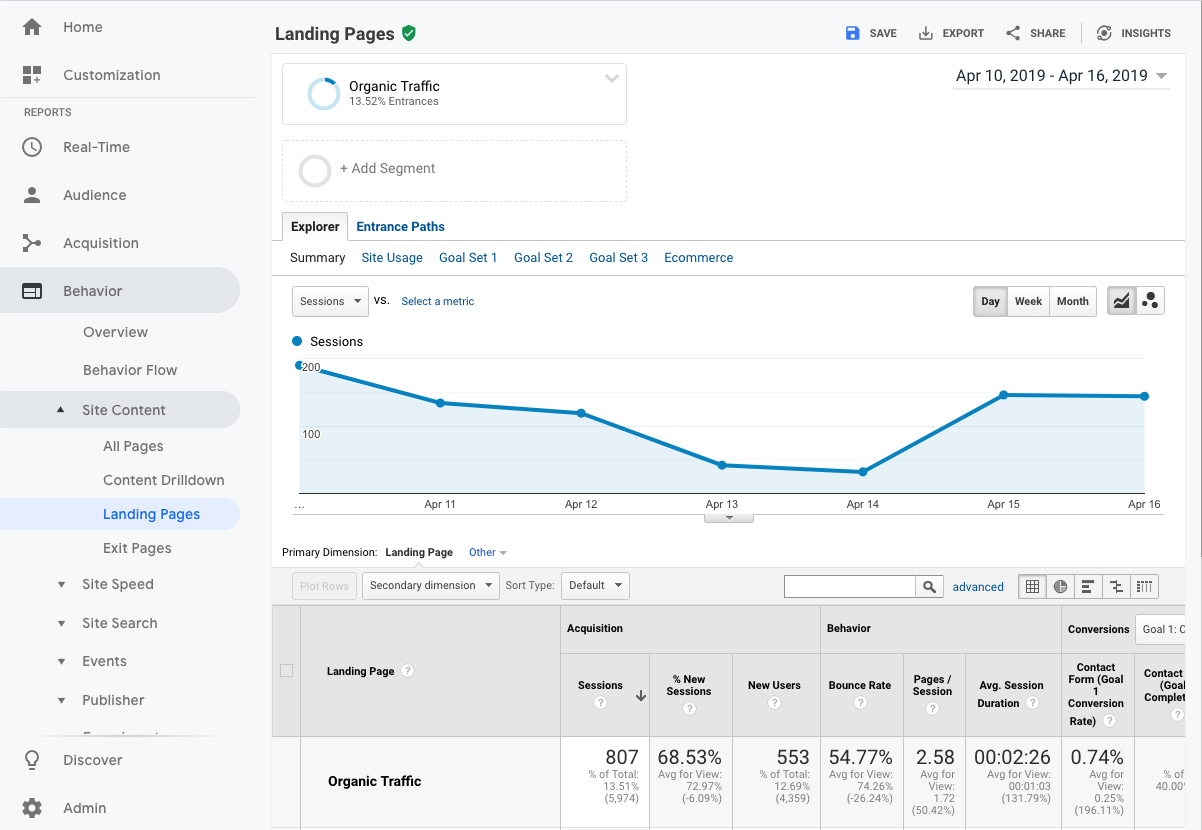Keywords are foundational when it comes to getting your website to a high ranking position on Google. Without proper and strategic keyword mapping / targeting, your search campaigns will never gain any ground.
As the foundation of SEO, keywords can make or break your efforts to build traffic to your site. Properly optimizing your website is a crucial step to gaining traffic to your website. Yet, there are several steps that you must take to properly develop a highly effective keyword map.
Keyword mapping is an imperative step to on-page optimization for a website. Keyword mapping is an organizational tool that involves mapping out your site structure, keyword targeting each individual page, implementing proper SEO tactics, and making recommendations in order to have a smoothly-run website.
See below a sample keyword map:
Why is this important? In the digital age, your website is the livelihood of your success online. If your content cannot be discovered, you risk losing the ability to connect with customers and grow your company
On-page optimization for your website can be a long and disorganized process, before and after implementation. By creating a solid SEO foundation, you avoid the risk of future complications in the process.
I have compiled a list of tips in creating a highly effective keyword map that will ultimately boost your site’s incoming traffic, brand recognition and discoverability.
Tip 1: Set Data-Driven Goals
Goal setting is arguably the most essential part of digital marketing. Without goals, you have no direction with where you build out your strategy.
When creating these benchmarks for your digital marketing efforts, ensure that you align them with your overall company goals.
For example, let’s pretend you are an ERP software firm targeting small businesses. Your company’s goals include increasing sales by 50 percent year-over-year, and you want to ensure you are achieving this through all aspects of digital marketing. Through previous research, you have determined that your sales team closes at a 10 percent rate.
Your goals specifically surrounding digital marketing should be to increase SQL’s(sales-qualified leads) to ensure that your 10 percent closing rate increases your sales by 50 percent.
You’re probably wondering what this has to do with keyword mapping. Whenever you are implementing any strategy in digital marketing (content marketing included), you should always have the company’s overarching goals in mind.
Once these benchmarks are determined, we can set goals for the keyword map and for the website and your content. Further, we can begin digging deeper into how we will be able to effectively create and align our keyword map.
Tip 2: Strategize Conversion Funnels
Conversion funnels that are strategically developed to, you guessed it – convert, are crucial to the keyword mapping process. You need to know what steps the customer is taking to click purchase or submit.
There are a few questions you need to ask yourself when you are optimizing, or even creating new conversion funnels.
- What product or service are you trying to sell?
- What current conversion funnels do you have?
- Which conversion funnels are working, and which are not?
- How easy is it for a user to convert on your website?
- Is your content helping your user convert/build brand awareness, or is it just taking up space?
A strong way to ensure you answer these questions correctly is to perform a conversion funnel audit. Depending on the site architecture of your website, this can be an extremely short process.
For example, go to the blog hub page of your company’s or client’s website. Find all of the main call-to-action buttons (CTA’s) and document them.
Simply, follow the funnel from start to finish, indicating opportunities that you may find in the process. Documenting the URL path of the funnel is crucial because you must ensure that you are properly tracking in Google Analytics.
If there are conversion funnels that you want to create or think may be valuable after further keyword research, document them and place it aside to implement after you fully strategize your map.
From here, check Google Analytics to see what conversion funnels are not being tracked, and ensure that new goals are created for them.
Tip 3: Complete Competitor Analysis
Prior to figuring out what pages you may be missing on your website, you must see what else is out there.
By doing competitor analysis, you can answer numerous questions about what is working, what is not being targeted, and you can find opportunities to discover niches in the industry to bring in new audiences.
There are several steps to competitor analysis and no two are the same. However, two helpful tools are SEMrush and our good old friend Google.
In SEMrush, you can search the keyword rankings of your competitor’s whole website, core pages, or content pages (or all of them). Say what?
See below:
After pulling all of the keywords from your competitors, compile them into an Excel or Google spreadsheet, and begin to pull as much information as possible.
When you pull the information from all of your competitors, a good next step is to identify gaps. Who is ranking for the most keywords? Who is bringing in the most traffic for their core content pages? Who is ranking for keywords that you (or your client) are not?
By grasping a larger understanding of this information, you are now able to place an importance on one to two competitors where you can dive deeper into their content pages.
There are a few telling factors for why a web page is ranking successfully, including meta information (title, description, heading), word count, backlinks, targeted internal linking, and more.
Meta Information
When looking at the meta information, there are a few things you should keep an eye out for.
Successful SEO practices have the targeted keyword (or semantic-related keyword) in the meta title, meta description, heading, image alt text, and more.
Checking the word count is another key indicator of a properly-targeted content page. When analyzing competitors, determine what they are doing properly (or doing poorly) to rank on the SERP, and try to make your efforts even more aligned with your target audience.
Backlinks
Obtaining quality backlinks are another indicator of why or why not a competitor is ranking highly on the SERP.
Google recognizes backlinks as an authoritative factor for the topic or keyword that the page is targeting. If your current website or content lacks strong links, it may be hard to compete for that keyword or with your competitors.
By taking a holistic approach, dive into your own personal keyword research for your company or client. Aim to understand exactly what kinds of keywords, their keyword difficulties, and Google-based search intent you should be going after.
Tip 4: Perform Strategic Keyword Research
Keyword research (and the subsequent execution of your research) is unequivocally the most important part of keyword mapping and SEO strategy. If your website and content do not target the right keywords, you will not properly gain organic traffic to your site.
In order to determine what your website should be targeting, figure out what your website is currently targeting and ranking for. This is what we like to call “phase 1” of keyword research.
Here, physically go into your website and pull all of the buzzwords from each page and throw them into a spreadsheet. This is an objective way to go through the content pages of your website and pull out what you are actually targeting.
After you complete phase 1, go through this spreadsheet of mashed together buzzwords and determine which are relevant and which are not. The purpose of this is to refocus your keyword research towards what actually matters and what you should discuss on your pages, in your titles, descriptions, and in your headings.
Once you refocus and regroup, move onto “phase 2” of your research. Hop back into SEMrush or Ahrefs and pull every variation of these keywords and determine what kind of searches are out there.
What are people actually typing into their search bar?
Now that you have found a group of keywords and all of their variations, highlight which keywords to go after and which keywords don’t fit your tone, audience, or business purpose.
Unfortunately, you are not done quite yet. From an objective look at this list of keywords, you may think that certain keywords seem like the perfect fit. However, in Google’s eyes the user intent of that keyword may be completely different than what you would imagine it to be.
Since you must follow King Google’s rules, dive deeper into the SERP and determine what the heck is going on.
Here we use the example search of the keyword “web design”.
As you can see, Google mainly uses local web design agencies and review sites for this keyword. The intent of this SERP is to find a web design agency locally (in this case, Austin).
In the SERP, there is a lot of information presented to you (meta title, meta description, URL slug, etc.). However, there is more information based on the other websites that are contained within that SERP.
When you analyze the pages that are contained within the SERP, it is clear what kinds of pages Google recognizes as the best fit for a search query. For example, when you search the term “SEO Agency”, it is clear that the majority of the pages are core/service pages. Therefore, if you are looking to rank for the keyword “SEO agency”, creating a core page will give you the ability to rank higher in the SERP because it matches the intent of your search (i.e: looking for an SEO agency).
When you go through the SERP, you see how Google analyzes the user intent of that search query. Whether it be a SERP filled with blog articles, products, core pages, locations, or a mix of the few, you can see whether or not the page you are trying to target will be able to end up on that SERP.
Once you finish performing a SERP analysis for these terms, you can group the keywords by intent so that you can determine which keywords you will use for core pages and which to use for blogs or resources.
With all of the proper research and implementation, you should be able to get people to your website, right? But how do we know that people who are searching for this keyword will convert?
Tip 5: Perform Google Ads Audit
The main purpose of proper keyword targeting is to convert new users into leads or customers, as that is what the overall business goals or KPIs encompass. Gaining high volumes of traffic is great, but if it is not targeting the right crowd, high volume traffic can go to waste.
Unless you are completely new to search marketing, there is a pretty high chance that you or your company has run Google Ads before (Hello PPC). Luckily, this information can be valuable for SEO.
Below is a screenshot of the “Search Term” overview in a Google Ads account. On the left hand side, there would be a list of keywords that your client or yourself would be targeting, and the data for each individual keyword’s performance.
When you go into your Google Ads account, you can go to keywords and search terms and see exactly what keywords are generating a high number of clicks and conversions.
By identifying the highest-converting keywords, we can find either the exact match or a related long tail variation of that keyword to properly target our core pages with. By pulling keywords we know have search intent that tends to convert as well as has a high search volume, we are pulling in high volumes of convertible traffic.
After obtaining the converting keywords, we want to do the same steps with our previous keyword research. By finding their search volumes, keyword difficulties, and then going into Google and doing a SERP analysis, we can determine which keywords are valuable to utilize for our page targeting. Pretty cool, yeah?
Ultimately, we want to similarly group keywords together to increase their potential for each page.
Tip 6: Create You Keyword Map and Implement
If you’ve reach this point, you are in a good place. You should have gathered valuable information that can eventually drive organic traffic to your website or your client’s.
However, if you do not properly execute the strategy you formed around your keyword research and audits, your website may never see the light of day (which is just an exaggeration for the first page on Google).
Now that you have gathered all of the necessary information, it is time to create a keyword map. Yes, it took this long for you to finally start building one.
Depending on how you organize information best, there are a couple of ways to do this.
One way is to start building out a list of parent and child keywords for each page on your site, which is covered in detail here. Alternatively, the easiest way I have found to organize it is based on tiers of your website. In this case, the homepage would be tier 1, core pages/content pages reachable from the navigation buttons would be tier 2, and so on.
In Google Sheets, you can go through each individual page of your website and ensure they are properly keyword targeting by tagging the pages or creating a note for each cell that represents a page.
To mark if you want a new page, keep the page the same, or make changes to a current page, create a data validation cell next to each page to determine its status.
Once we have determined which pages are being kept, changed, or removed, it is time to write meta titles, meta descriptions, headings, URL structures, and other strategies for each page.
The basic rules of thumb I tend to follow for this keyword mapping document is the following:
- Meta titles should be 55-65 characters long
- Meta descriptions should be 155-165 characters long
- Headings should be enticing but include the targeted keyword
- URL slugs should include keywords in them; however, they should not include filler words (the, a, an, etc.)
- On-page content should be 300-500 words for core pages, depending on what the top pages for those keywords’ SERP have, and should include target and related keywords.
- For blog articles, the word count should be no lower than 1,750 for best SEO results (*This is the word count that has worked best from our own team’s data review).
Once you have confirmed exactly how you want your pages to be targeted and with what keywords, move forward with implementation and analysis.
Tip 7: Consistently Analyze Data
As we all know, SEO is a long-term play. Tactics may not work immediately. Tactics may not work at all. You may need to pivot.
Regardless, create models and trackers that can determine performance. There are quite a few trackers that are useful; however, you want to determine which one works best for your company’s.
Tools such as SEMrush and Moz can track search visibility, traffic, and keyword rankings to determine if there was any effect on the changes made.
See below:
The Moz keyword ranking tracker checks rankings for tracked keywords, the search visibility that the keywords are gaining for your website, as well as subsequent traffic that has increased.
Another popular way to track changes in organic traffic is through Google Analytics. There are a few ways to monitor this; however, the easiest is through Landing Pages. In order to access this part of the account, you go to Behavior → Site Content → Landing Pages.
From here you can see the period-over-period changes in landing pages organically or through whatever channel you want to analyze.
Summary of the Keyword Mapping Proces
Ultimately, keyword mapping and keyword research can make or break your website and content ability to rank on Google. As B2B businesses utilize Google as a main hub for traffic to their website, you must give real attention to how your website works with the search engine to become found by potential customers.
By going through the necessary steps of goal setting, conversion funnel strategizing, completing competitor analysis, performing keyword research, performing a Google Ads audit, and creating a keyword map, you set yourself and your company/client up for success.

